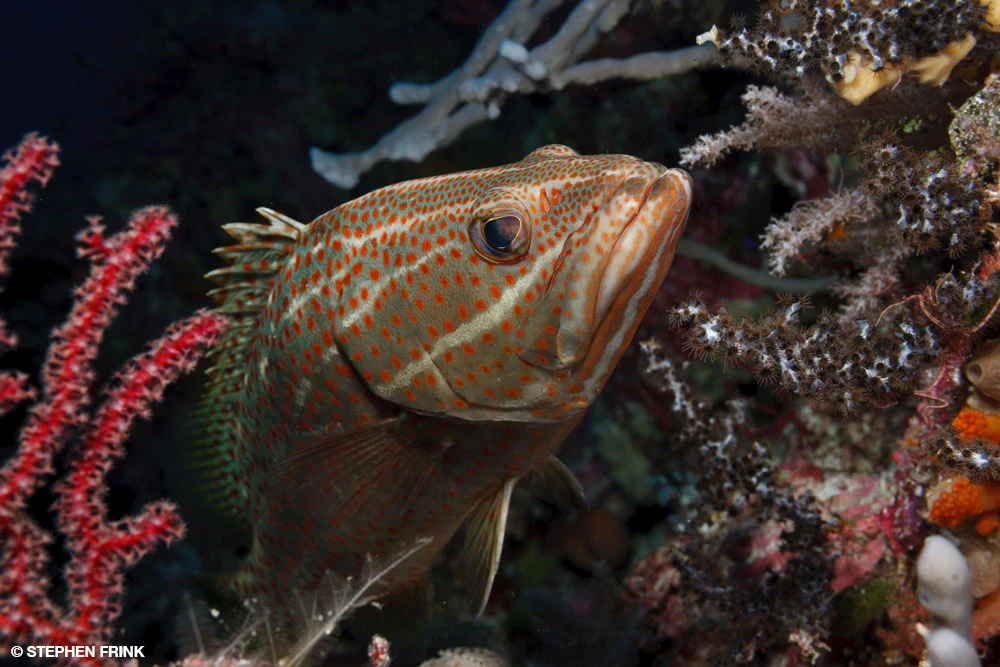Diving at night provides an exciting new dimension in underwater exploration. As the light fades and darkness spreads through the water, marine life exhibits different behaviors, and the underwater world takes on a new and ethereal quality.
For divers seeking a change to their usual daytime diving, night diving offers many rewards, but it also comes with its own set of challenges. The critical aspects of night diving include having essential equipment, addressing specific environments such as caves and wrecks, managing currents and tides, navigating, and learning techniques for safely exploring the underwater world after dark.
Proper lighting is one of the most significant factors in night diving. Unlike most daytime dives, where sunlight penetrates the water, night divers rely entirely on artificial light sources to see and navigate. A primary dive light is essential for illuminating your path and observing marine life. It should be powerful enough to cut through the darkness and wide enough to provide a good field of vision. LED lights are popular due to their brightness and battery efficiency.
Backup lights are equally important. A backup ensures you are not left in complete darkness if your primary light fails. Carrying at least one backup light on every night dive is advisable. Chemlights also make great additions to your lighting plan as they are always on and are not battery- or bulb-dependent.
Consider beam width, intensity, and battery life when selecting dive lights. A narrow beam is ideal for looking into crevices and spotting distant objects, while a wide beam is better for general visibility. Adjustable beam lights allow you to switch between narrow and wide beams. Regarding battery life, consider rechargeable lights versus lights with disposable or replaceable batteries. If you are making multiple night dives, you may not have time to recharge a battery, but you can easily swap batteries for your next dive.

You should also be aware of particulate matter suspended in the water, which can cause backscatter — a very powerful light will actually be less effective than one with a more focused beam and less intensity. The other factor to remember is matching your light’s intensity to your buddy’s. You will be using your light to signal each other, so both lights should be able to cut through the other’s beam and allow both of you to effectively get each other’s attention.
There are additional considerations for light selection. How long will the dive last? Will you be able to accomplish all your tasks with a handheld light, or will you need to have hands-free illumination at some point? Will you be undertaking photography or videography?
Most dive lights are handheld. Some are self-contained units with the batteries and bulb (or emitter) in one unit, while others have a remote battery pack in a canister with a cable connection to the light head. The canister lights typically have a much longer duration at a higher output and can be useful for lighting an area for photography or video.
Chemlights are long-lasting, single-use, low-level lights that can indicate your position to your dive buddy or be a tertiary backup in case of multiple light failures. They provide enough illumination to read gauges or a compass and can be seen at the surface.
Night diving in caves and wrecks can be exhilarating but comes with added risks. These environments are inherently more challenging due to their enclosed spaces, indirect ascents to the surface, and potential for entanglement.


Cave diving requires specialized training and equipment. The darkness inside a cave can be absolute, making reliable lighting even more crucial. Always use a guideline to mark your path and ensure you have a clear way back to the entrance. Cave divers use reels and spools to lay down lines and markers to avoid getting lost. Remember that if you are cave diving at night, natural light will not illuminate the entrance, so a continuous guideline to open water is critical.
Exploring shipwrecks at night is like walking through a watery haunted house. The dangers of sharp metal edges, unstable structures, and entanglement hazards, however, can temper the excitement of discovering a piece of history. Use the appropriate light to scan your surroundings, and proceed with caution.
While sharing many similarities, penetration wreck diving is different enough from cave diving to require unique techniques, considerations, and planning. A shipwreck tilted on its side with multiple decks that may have collapsed in different stages can be a confusing place in the best of conditions, notwithstanding a night dive with the disturbance of rust and particulates that will be in the water just from your bubbles. Never penetrate a wreck without proper training.
Understanding and managing currents and tides are essential skills for any diver, but they are even more critical during night dives. Currents can be disorienting in the dark, making it easy to drift off course. Always dive within your experience level, and be aware of the current conditions before entering the water. Use natural features such as rocks and coral formations to shelter from strong currents and conserve energy.
Tidal changes can impact visibility and the ease of your dive. They can also affect your navigational cues. Always plan your dives around slack tide to help minimize the effects of tidal currents. Be sure to check local tide charts and gather information about local dive site conditions before diving.
Navigating underwater at night requires a combination of natural and artificial cues. Always carry a reliable underwater compass while diving, preferably one with special glow-in-the-dark markers specifically for navigating at night. Before your dive, take a compass bearing on your intended route and write it down in case you need to reference it during your dive. Throughout your dive, check your compass to ensure that you remain on course.


Familiarize yourself with the dive site during the day if possible. Look for distinct landmarks such as large rocks, coral formations, or other structures that can guide you. Always maintain awareness of the current. Currents can shift mid-dive, so knowing the current’s direction relative to your compass can help guide you underwater if you notice that the current’s direction changes. Particulates in the water moving in a different direction indicate a current shift.
If you are diving into the current, and you are suddenly with the current, be sure to check the compass direction to verify that you have not inadvertently turned around. Always trust your compass in these circumstances, and it is generally advisable to head to your exit point if an unexpected shift in current occurs. You and your buddy should agree on hand signals and light communication methods before the dive. Stay close to your buddy, and check in frequently to ensure you are both safe and on course.
Safety is always a top priority in any dive activity, and night diving presents unique challenges that require extra precautions. In addition to your compass and backup lights, carry surface signaling devices that can be seen in the dark. Some surface marker buoys are designed to take a light source. You can place your light in one end, and the entire surface marker lights up, making it much more visible at the surface should you need to signal a boat or someone on shore.
It is also important for night dive planning to identify your exit point. If you are diving from the beach, place a flashing light on the shore high enough for divers at the surface to see. They can use this light to guide themselves back in. If diving from a boat, have a light-emitting device affixed to the boat to identify it as the exit. Mark the anchor line with chemlights, and place a strobe on the bottom of the boat’s ladder to show divers below where the boat is located. The crew should have a backup plan in case their signal lights fail, and they should communicate their backup plan to all the divers.
It is essential to plan and prepare before your dive. You should always check your equipment, including lights and backup lights, to verify they are in good working order. Fresh batteries are always a good idea. Go over your dive plan with your buddy, including depth, duration, and exit points. Make sure you have a clear understanding of the site and potential hazards.
Maintaining neutral buoyancy is crucial, especially in the dark, where it can be especially challenging without as many points of reference. Pay special attention to your depth, and monitor your gauges, feel any pressure changes in your ears, and observe the environment with your light to note any variations.
Explore More
See more about night diving in an online photo gallery and these videos.
© Alert Diver – Q3 2024
